Behold Our Dazzling Night Sky When the Milky Way Collides with Andromeda in 4 Billion Years
This is what our night sky is going to look like in 3.9 billion years:
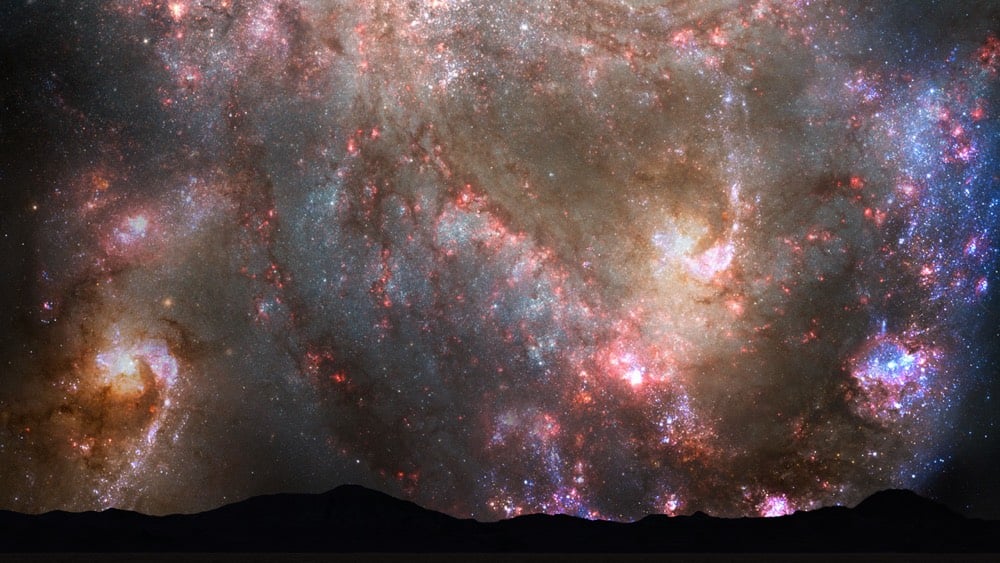
Wow! So what’s going on here? Using data from the Hubble Space Telescope, astronomers at NASA have predicted that our own Milky Way galaxy and the nearby Andromeda galaxy (M31) will collide about 4 billion years from now. As part of the announcement from 2012, they produced a video of what the collision would look like and a series of illustrations of what our sky will look like during the collision process.1
In 2 billion years, Andromeda will be noticeably closer in the sky:
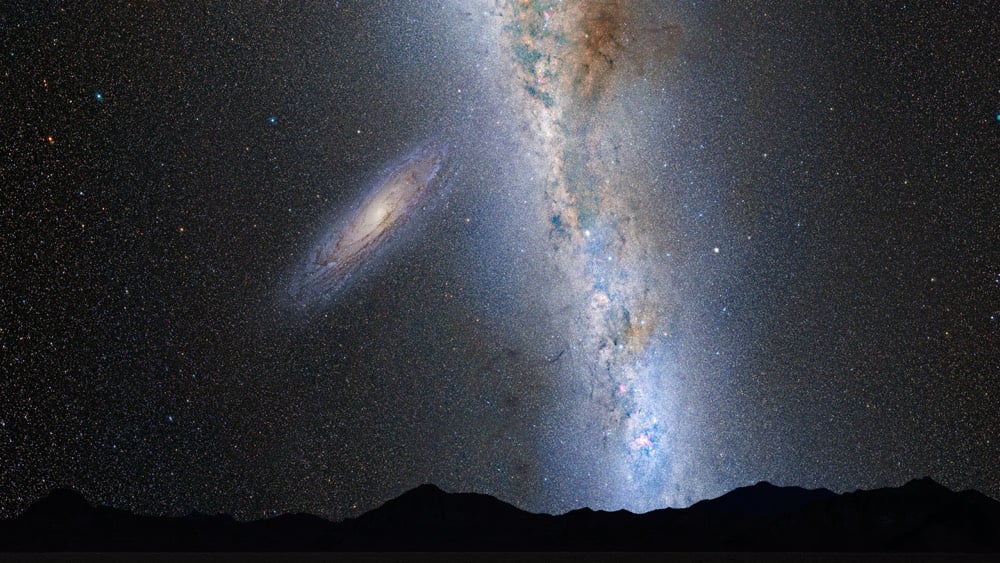
By 3.75 billion years, it will fill a significant chunk of the sky. And the Milky Way will begin to bend due to the pull of gravity from Andromeda:
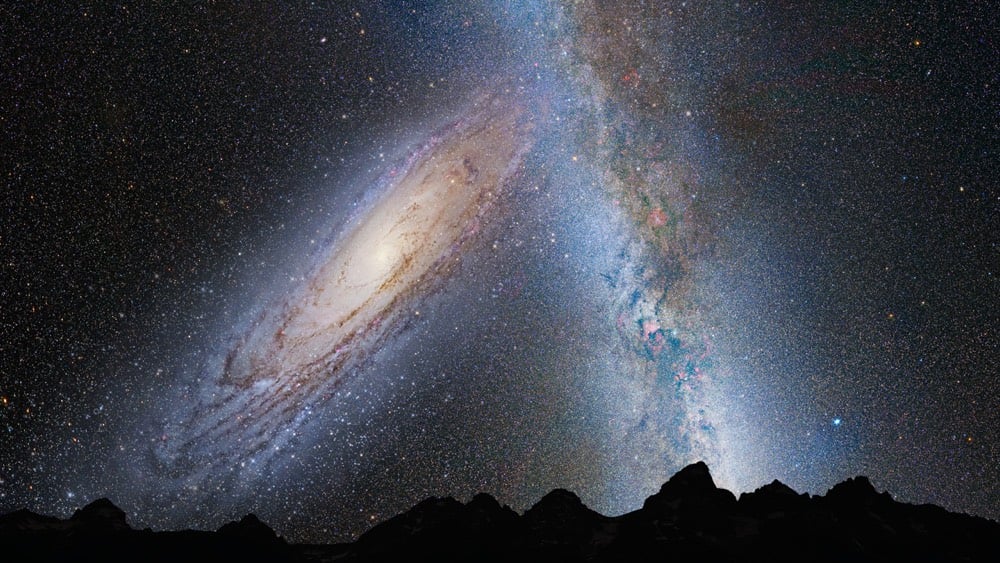
In about 3.85 billion years, the first close approach will trigger the formation of new stars, “which is evident in a plethora of emission nebulae and open young star clusters”:
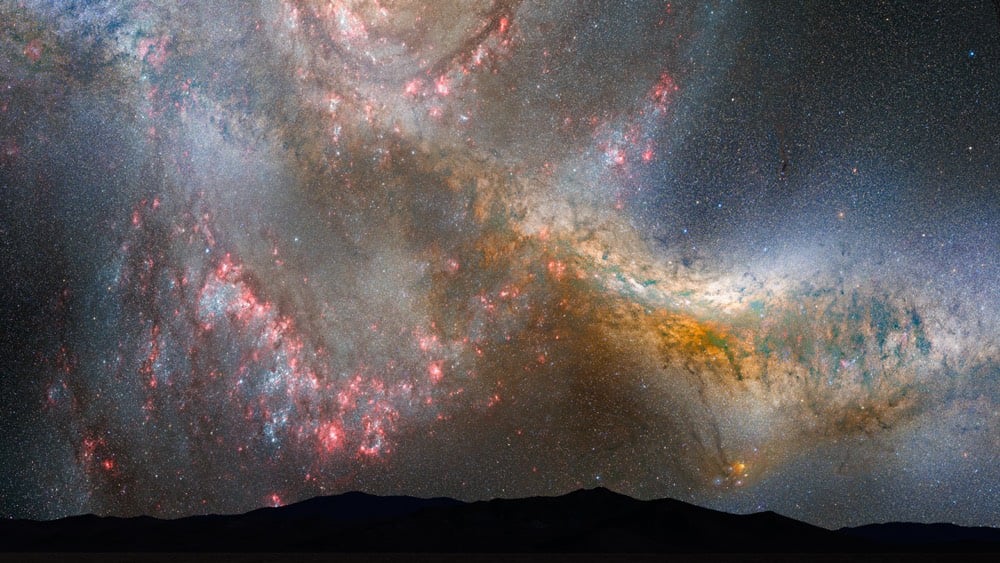
Star formation continues 3.9 billion years from now. Could you imagine actually going outside at night and seeing this? It’s like a nightly fireworks display:

After the galaxies pass by each other in 4 billion years, they are stretched and warped by gravity:
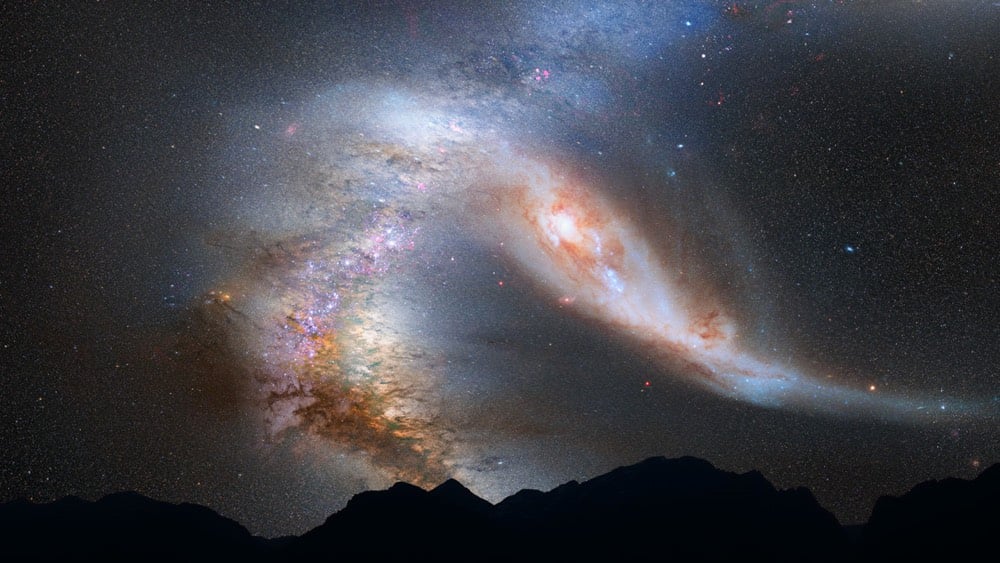
In 5.1 billion years, Andromeda and the Milky Way will come around for a second close pass, their galactic cores blazing bright in the night sky:
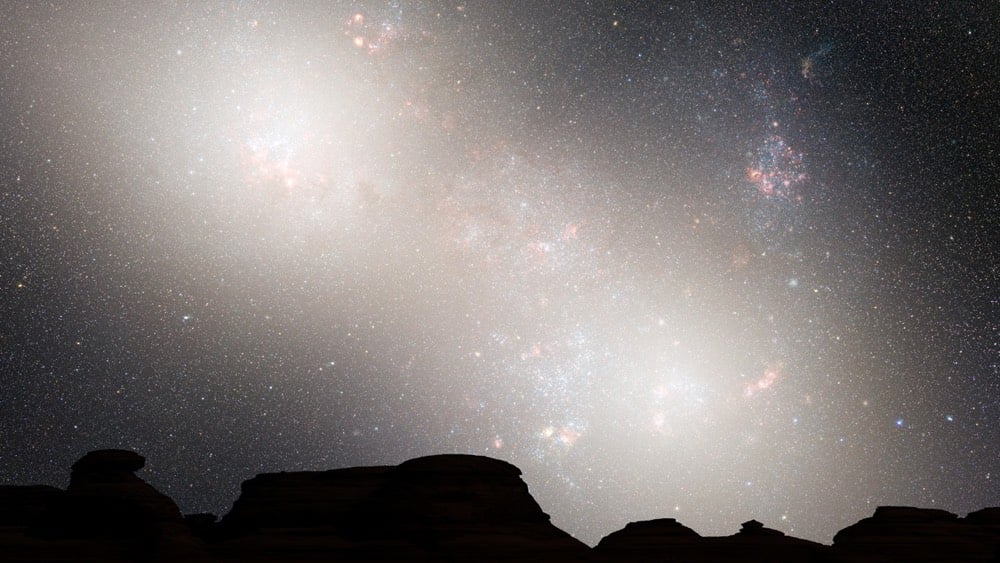
And finally, in 7 billion years, the two galaxies will have merged into a single elliptical galaxy nicknamed Milkdromeda:
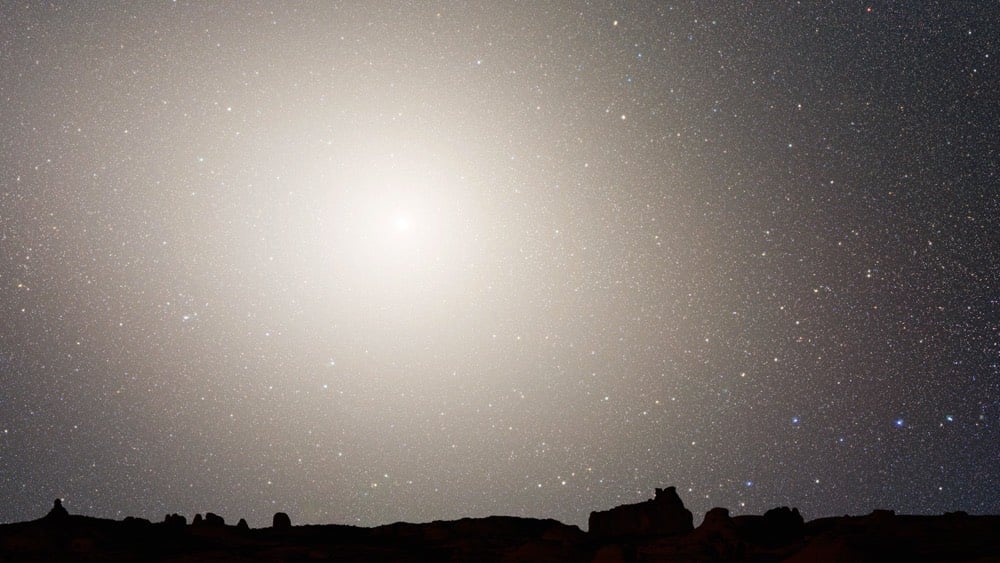
Interestingly, despite the galactic collision and the dazzling view from Earth, it’s extremely unlikely that any individual stars will collide because of the sheer amount of empty space in galaxies.
I mean, assuming there will still be someone or something standing on the Earth 4 billion years from now to witness it. Presumably whoever’s around will have solved light pollution by then? The bigger worry is that according to the timeline of the far future, Earth will be uninhabitable long before an collision occurs (average surface temp of 296 °F in 2.8 billion years). Toasty!↩





Stay Connected